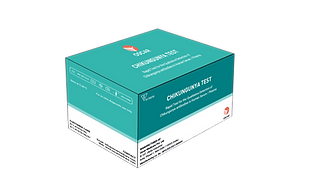Chikungunya is caused by the chikungunya virus (CHIKV), first identified in Tanzania in 1952 Due to the challenges in accurate diagnosis for chikungunya, the is no real estimate for the number of people affected by the disease globally on an annual basis. The disease mostly occurs in Africa, Asia and the Indian subcontinent. However since 2004, chikungunya has spread rapidly and been identified in over 72 countries throughout Asia, Africa, Europe and the Americas. As of 5 May 2022, 50,459 cases and seven deaths have been reported, majority from Brazil (48,665).
About
Diagnosis
Prognosis
Source: World Health Organization
Chikungunya
Chikungunya virus is transmitted between humans via mosquitoes. When a naïve (uninfected) mosquito feeds upon a viremic person (someone who has the virus circulating in their blood), the mosquito can pick up the virus as it ingests the blood. There is currently no vaccine against the virus. At present, the main method to control or prevent the transmission of Chikungunya virus is to combat the mosquito vectors. Prevention and control relies heavily on reducing the number of natural and artificial water-filled container habitats that support breeding of the mosquitoes.
Several methods can be used for diagnosis of chikungunya virus infection. Serological tests, such as ELISAs may confirm the presence of IgM and IgG anti-chikungunya antibodies. The virus may also be directly detected in the blood during the first few days of infection by both serological and virological methods (particularly reverse transcriptase–polymerase chain reaction (RT–PCR)).
There is no specific antiviral drug treatment for chikungunya. The clinical management targets primarily to relieving the symptoms, including the joint pain using anti-pyretics, optimal analgesics, drinking plenty of fluids and general rest. The joint pain is often very debilitating; it usually lasts for a few days, but may be prolonged for weeks, months or even years--the name “chikungunya” derives from a word in the Kimakonde language, meaning “to become contorted”, and describes the stooped appearance of sufferers with joint pain (arthralgia).
Chikungunya Test
Oscar Chikungunya test is an in vitro diagnostic rapid test based on the principle of immunochromatography on a membrane, for simultaneous and differential detection of Chikungunya specific antibody (IgM/IgG) in human serum/ plasma for diagnosis of Chikungunya infection. For professional use only.
Pack Size: 10 Tests

Test Procedure
READ THE INSERT PROVIDED, OR WATCH THIS VIDEO BEFORE DOING THE TEST

Collect The Sample

Add Sample to Well

Add buffer to Well

Wait for 5-20 minutes
Test Results
READ THE INSERT PROVIDED, OR WATCH THIS VIDEO BEFORE READING YOUR RESULT

Negative

Positive

Positive

Invalid

Positive

Invalid
Oscar Chikungunya Products
CLICK ON THE PRODUCT FOR DETAILS
Rapid Test Kits

